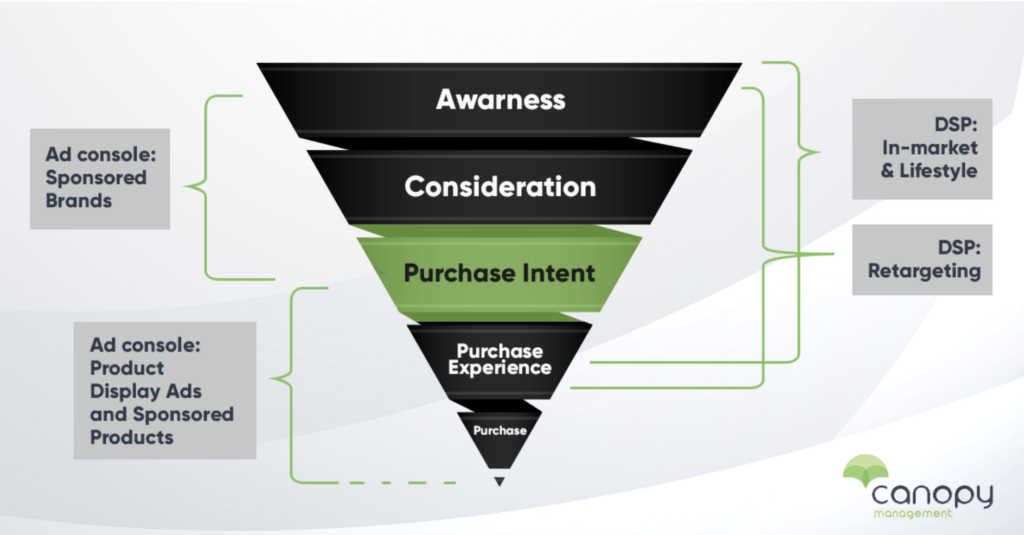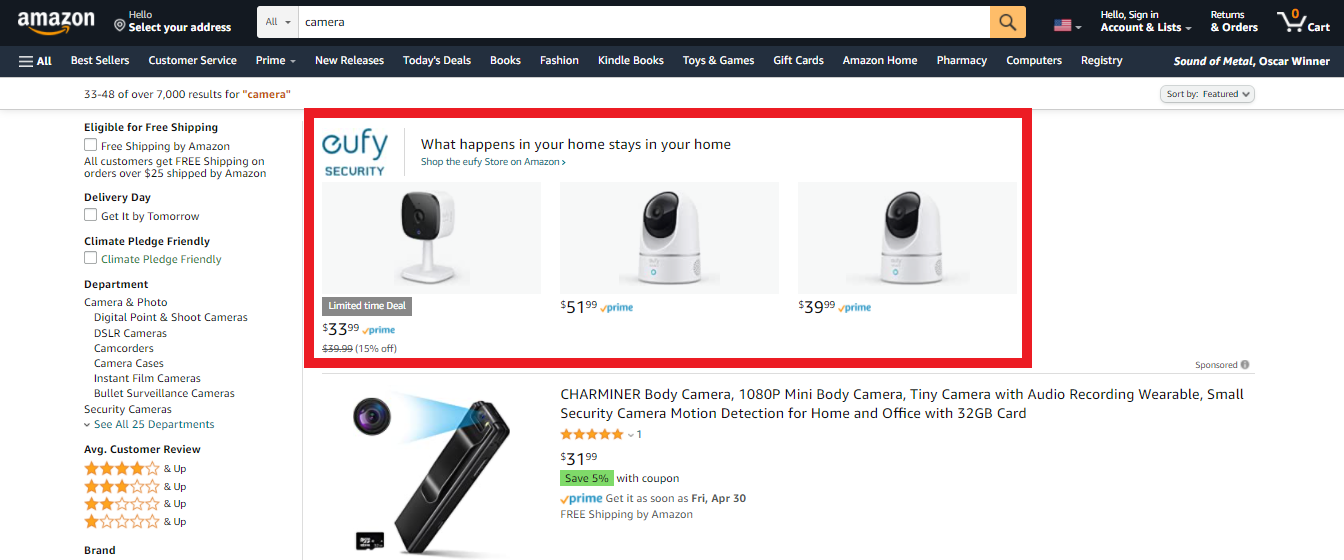As eCommerce brands increasingly diversify across multiple sales channels, their fulfillment strategies grow ever more fragmented. This brings to light a critical question: are merchants making a big mistake treating Amazon as just another online selling platform? Amazon boasts...
As eCommerce brands increasingly diversify across multiple sales channels, their fulfillment strategies grow ever more fragmented.
This brings to light a critical question: are merchants making a big mistake treating Amazon as just another online selling platform?
Thinking About Hiring an Amazon Management Agency?
Canopy’s Partners Achieve an Average 84% Profit Increase!
Let’s talkAmazon boasts enviable assets – over 310 million customers and 220 million Prime members – a world-class logistics network, and unrivaled data resources. The payoff for sellers who can tap these strengths while still cultivating their own sites while expanding to other marketplaces is considerable.
The question that remains – for both Amazon sellers and agencies – has a lot to do with how to best allocate strategic resources.

Off-Amazon Traffic Has Become a Significant eCommerce Lever
Amazon sellers have learned that eCommerce success can have a lot to do with the ability to sell everywhere. With off-Amazon traffic becoming a big lever driving sales velocity, it’s front of mind for many entrepreneurs.
However, for an Amazon agency, that eCommerce multichannel mojo isn’t exactly a two way street. That’s because while it’s probably a good idea for Amazon sellers to branch out to explore other sales channels, for an eCommerce management agency, trying to exploit every single sales platform out there probably ends up doing a disservice to those selling in any one channel.
But first . . .
What is Multichannel Selling and Why Might It Be a Good Thing?
A multichannel strategy involves an eCommerce brand distributing its products across several sales platforms, with each channel operating independently.
Here are a number of reasons why it’s become a popular path forward for a number of brands.
Better Experience for the Customer
As omnichannel strategies incorporate more touchpoints, the need arises for greater integration. That way consumers will see more consistency when shifting from one channel to another. Removing divisions between marketing channels can empower shoppers, yet quality execution proving seamless is easier said than done.
More Traffic
Transitioning to an omnichannel model has a potential revenue upside, though realizing gains involves challenging efforts at coordination. One survey of customers found omnichannel shoppers outspent single-channel ones, but simply having cross-channel presence alone does not guarantee results. For example, product returns – as the result of confusion or duplicate orders – require a lot of work.
Data Acquisition
Unifying data streams from previously siloed channels provides fuller shopper insights to guide personalized experiences. In theory, this omnichannel approach informs tailored content and offers encouraging increased spend. Still, customers growing wary of expansive data collection and manipulation has become a troubling, and potentially impactful trend.

What is Omnichannel eCommerce?
Unlike multichannel sales, omnichannel commerce revolves around the customer journey rather than product distribution across channels.
The priority is crafting seamless, integrated experiences for customers as they browse, research, and purchase through any touchpoint—website, app, online marketplace, social media, brick-and-mortar store, etc.
In today’s crowded eCommerce landscape, brands must optimize their digital presence to stand out. An omnichannel model aims for a competitive edge through elevated customer experience.
Still, it’s not a foolproof recipe.
Even though research has shown that omnichannel shoppers often yield higher lifetime value via increased loyalty and repeat purchases compared to single-channel customers, the operational overhead in unifying – and personally coordinating – the collected data from potentially disjointed channels can be substantial.
Multichannel Selling Can Have a Downside
At the same time, there are downsides to a multichannel or omnichannel sales strategy.
While the main goal is to provide consistent product information to customers within every channel, there can be a lack of coordination between channels—customer actions and marketing efforts do not carry over from one channel to another.
Here are a few other trouble spots for brands attempting to sell throughout multiple channels.
A Disconnected Customer Experience
Because data and insights are siloed, the information is unable to flow freely to promote seamless customer experiences. Though multichannel selling expands an eCommerce company’s reach, lack of channel integration limits potential synergies.
Customers may interact with disconnected touch points rather than a unified brand identity tailored to their needs. That can cause customer confusion. With an eCommerce brand spread across multiple channels such as online stores, marketplaces, and social media, customers may find it difficult to tell that the same company owns all these channels.
This could dilute brand clarity and recognition.
Challenges With Integration
At the same time there are challenges with integration. Without a unified back-end system, managing inventory, pricing, and order fulfillment across very different sales channels can be hugely complex. It can quickly lead to a fragmented customer experience.
Potentially Higher Costs
Then there are potentially higher costs. Developing and maintaining dedicated operations and marketing campaigns tailored for each sales channel demands greater investment of resources and staff. It can really eat into profit margins.
Conflicts Between Channels
At times, pricing and assortment decisions made for one sales channel could undermine another channel controlled by the same brand. This channel conflict threatens revenue streams.
Data Disconnect
Crucial customer data like purchase history, preferences, and browsing behavior that’s isolated in channel-specific siloes makes gaining a single view of the customer very difficult. This impedes data acquisition and personalized marketing.
The trick lies in balancing intelligent channel expansion and integration to provide for customer convenience while maximizing sales growth in a cost-efficient structure. Getting this right takes work but pays dividends.
An Amazon Agency Perspective
For eCommerce sellers, the benefits of multichannel selling might outweigh the negatives. As you can see from this post, there are important reasons that an entrepreneur might want to choose one or the other. A good lawyer could easily argue both perspectives.
But, when it comes to Amazon agency, that’s not the case.
From the perspective of Canopy Management, trying to blend every eCommerce platform under the sun isn’t just adding complications, it might be doing a disservice to our Partners.
Sure, for a lot of agencies, it might be tempting to use a very big eCommerce basket to collect as much revenue as possible. However, selling on Amazon is different, and has SO MUCH economic gravitational pull that it requires its own processes and strategies.

Canopy Management Has a Purpose-Built Amazon Team
Your brand’s history is unique. That’s why Canopy starts every project with meticulous research to find trouble spots, strategic insights, and growth opportunities. And we do it all with the help of experienced Amazon experts, supported by purpose-built custom software singularly designed for a specific brand launch or ad campaign.
Here are five more reasons why Canopy Management treats selling on Amazon’s marketplace very specifically:
1. Generic, Off-the-Shelf Software is a Profit Killer
Generic, off-the-shelf multiplatform software might save money for the agency itself, but it does so by potentially risking the client’s money.
On Amazon, things move very quickly. Reliance on third-party software severely limits agility and innovation. The lack of proprietary tech slows responsiveness to ever-evolving channel needs. Months can pass before new capabilities come online.
2. Starting From Scratch – Over and Over
Without having cross-functional teams already in place, the build-out of omnichannel siloes demands each channel start from scratch. Having to piece together disjointed groups means missing out on the cohesion that’s earned through shared growth.
That can lead to a lot of wasted effort and resources while you’re reinventing the wheel (over and over). At Canopy Management, our teams have worked together for years.
3. Inaccessibility of Critical Data Points
Despite the omnichannel label, siloed initiatives inhibit information sharing between channel teams laser-focused on specialized execution. That can lead to a form of tunnel vision and prohibits the broad vision that allows entrepreneurs to construct multiplatform brand initiatives.
4. A Semi-Truck, Not a Sports Car
Larger, global agencies often require a seemingly endless process of approvals and take longer to navigate time-critical situations.
As multichannel agencies grow to accommodate the many platforms, bureaucratic hierarchies and structures soon follow. That’s why large agencies struggle to match the nimbleness of more dedicated agencies.
Selling on Amazon requires the ability to pivot on a dime. Wouldn’t you rather have a sports car than a big truck?
5. C-Level Leaders Haven’t Been in the Trenches
At larger agencies the executive-level team leading the decision making typically haven’t been in the eCommerce trenches for a long time. They’ve lost touch with what’s working TODAY.
In too many cases, C-level executives are simply not up to date on the latest innovations on the marketplace or the latest strategies. They haven’t had their hands on the controls directing media and advertising for several years.
That’s a lifetime on Amazon’s mercurial ecosystem.
How Canopy Management Can Help
Canopy Management is a full-service marketing agency for Walmart and Amazon sellers. Our team consists of former Amazonians, multi-million dollar sellers, and award-winning experts.
When you consider the many ways that Canopy Management can help you grow your business, you’ll see why selling on Amazon is much easier “under the Canopy.”
Strategic Growth Planning Listing Copywriting Optimization Listing Photography Product Videography Advertising Management Customer Service Demand Side Platform (Amazon DSP) Amazon Posts Full Service Management Amazon Review AggregationReady to Grow Your Amazon Business?
Start applicationThe post Why Betting on a Multichannel Agency Could Underserve Your Amazon Brand appeared first on Canopy Management.















